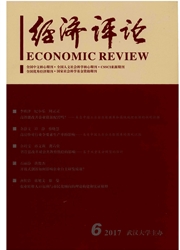

 中文摘要:
中文摘要:
极大似然估计等均值化回归方法会掩盖不同时间段的数据特征,故本文通过构造广义空间计量模型对传统Feldstein—Horioka(FH)资本流动性检验进行了分阶段估计。结果显示我国1979—1992年阶段FH系数显著为负或不显著,而1994—2010年期间则显著高于0.64。本文从体制变革中我国中央与地方政府行为特征变化角度对以上现象给予了解释。同时,本文采用物质资本存量变动率指标,更加直接地展示了多类权重矩阵情形下我国地区资本流动性的空间分布及其影响因素。进一步的,本文通过选取或构造制度潜在变量分析了一些重要经济变量对地区资本流动能力产生作用的条件。本文基于空间计量模型的分析得出了较为丰富的结论,并最终指出改变对地方政府以GDP增长率为主导的考核机制是提升我国地区资本流动能力关键的变革环节。
 英文摘要:
英文摘要:
The estimation methods on account estimation, are likely to disguise the respective of mean value, such as maximum likelihood characteristics of different periods. This paper specifies a general spatial model to extend the traditional FH test, and then it shows us two FH coefficients which arc so different when we estimate China' s province data in the periods of 1979 - 1992 and 1994 -2010 separately. For the first period ,the FH coefficient is significant negative or not significantly under two geographic weight matrices, which are binary and inverse squared standardized weight matrix. However, the FH coefficient is significantly higher than 0.64 for the second period. This paper gives an explanation for this phenomenon from the perspective of institutional change and corresponding behavior of China' s central and provincial governments. At the same time, we regard the changing rate of physical capital stock of each province as an index which can demonstrate the mobile capability directly, and depict the spatial position by using local Moran's I statistics. What' s more important, we analyze many influencing factors of China' s provincial capital mobility from two geographic weight matrices to two economic weight matrices, as well as their institutional conditions if necessary. In short, this paper obtains convincing conclusions based on the spatial econometric estimation. Finally, it points out that the key step to promote China' s capital mobility is changing the governments gradually. singular assessment criterion of GDP growth to the local
 同期刊论文项目
同期刊论文项目
 同项目期刊论文
同项目期刊论文
 期刊信息
期刊信息
